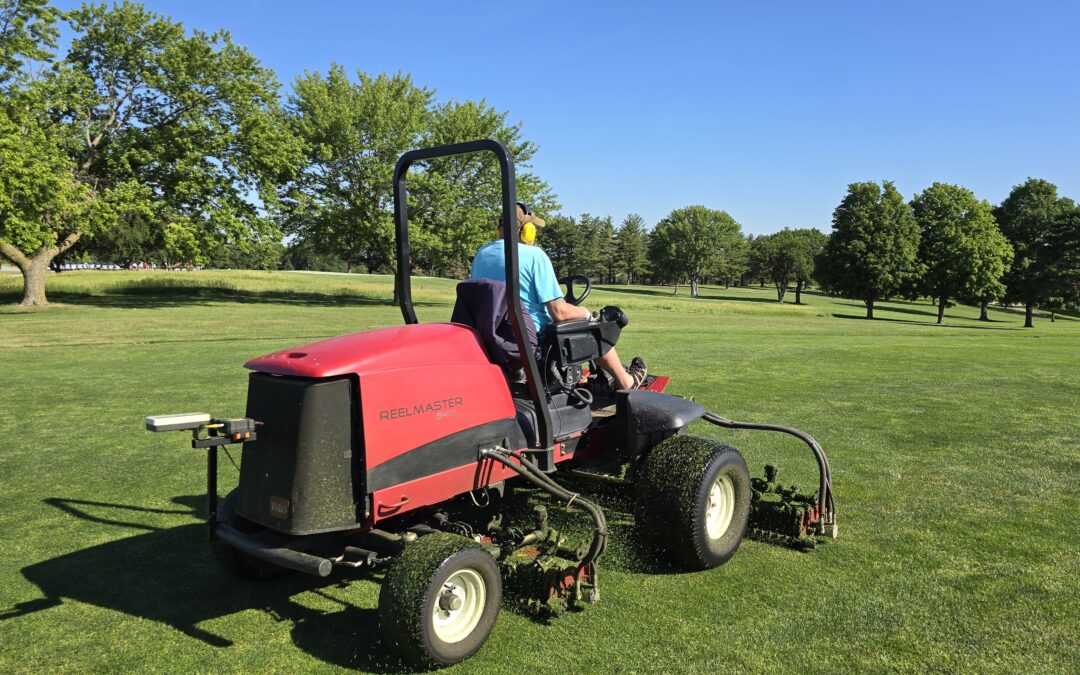Turfgrass managers possess an exceptionally keen eye for detecting turf stress. That can be both a blessing and a curse in late summer. I remember dreading the morning drive to Ager Golf Course after being surprised by disease or drought stress the day before. Even when golfers were happy, those weak spots weighed on me. Could I have caught and fixed the stress earlier? That question has driven our team to explore and evaluate various remote sensing technologies for turfgrass management.
Why Remote Sensing Matters for Turfgrass
For years, turf managers have relied on experience and observation to make input decisions. Remote sensing offers a way to quantify those same observations using light reflectance—measuring how turf absorbs and reflects specific wavelengths of energy. Subtle changes in reflectance can reveal differences in growth rate, nitrogen status, and stress before they’re visible to the human eye.
Our research team began investigating canopy-reflectance technology in 2018 to determine how well it could predict turfgrass growth and performance. The goal wasn’t to replace a superintendent’s judgment—but to provide consistent, quantitative information to guide it.
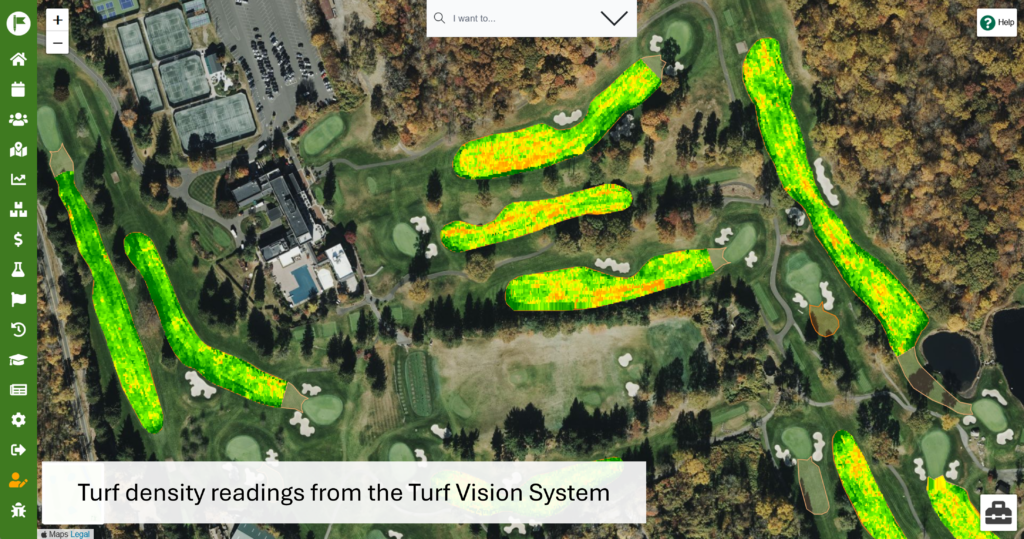
Development of the Turf Vision Sensor
Through several years of field studies, we learned that variations in canopy reflectance could be used to estimate Leaf Density (related to growth rate and stress) and Nitrogen Status (related to nutrient sufficiency). These measurements, derived from scientific indices such as NDRE and NDVI, became the foundation for the GreenKeeper RECON Turf Vision Sensor—an active, mower-mounted canopy sensor that measures turf reflectance under its own light source.
Unlike passive sensor systems mounted to drones or satellite that depend on sunlight, the Turf Vision Sensor operates in any lighting condition—morning, evening, cloudy, or clear — because of it’s internal light source. Mounting the sensor on the back of the mower eliminates issues from dew, mowing stripes, and inconsistent canopy height. These are issues that have plagues passive systems in the past and limited widespread adoption. With each mower pass, the system can collect thousands of reflectance readings that are georeferenced and uploaded to GreenKeeper, where they can be compared over time to show how turf is responding to management.
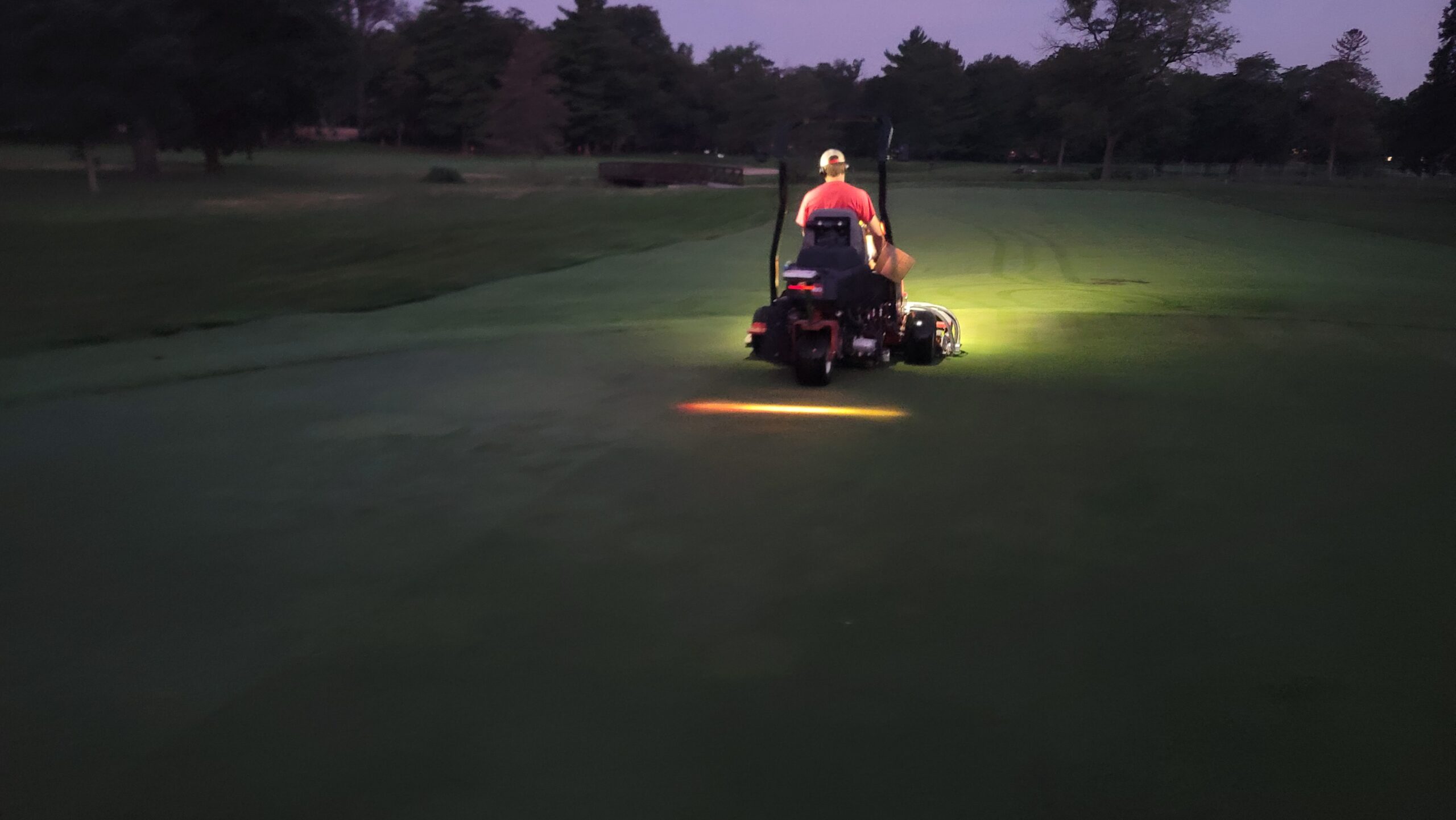
How the Turf Vision System Works
The GreenKeeper RECON Turf Vision System pairs an aX AutoLogger with an rX Crop Sensor to collect canopy reflectance data automatically during mowing. The process is fully autonomous. When the mower starts, the aX logger powers on and waits for the mower to leave the shop’s GPS-defined geofence. Once outside that area, the rX sensor activates and begins recording canopy reflectance. Data collection occurs continuously as the mower moves, capturing one reflectance measurement with every foot for mower travel.
When the mower returns to the shop, the system detects the geofence boundary, powers down the sensor, and automatically connects to the shop’s 2.4 GHz Wi-Fi network. The aX logger then uploads the data to GreenKeeper, where the GreenKeeper CIS platform processes and maps it. Within CIS, the software crops and interpolates tens of thousands of individual readings into smooth, high-resolution maps of turf leaf Density and Nitrogen Status. The Scouting Tools within GreenKeeper CIS help managers classify areas of stress, refine color tables, and track how inputs influence turf performance over time.
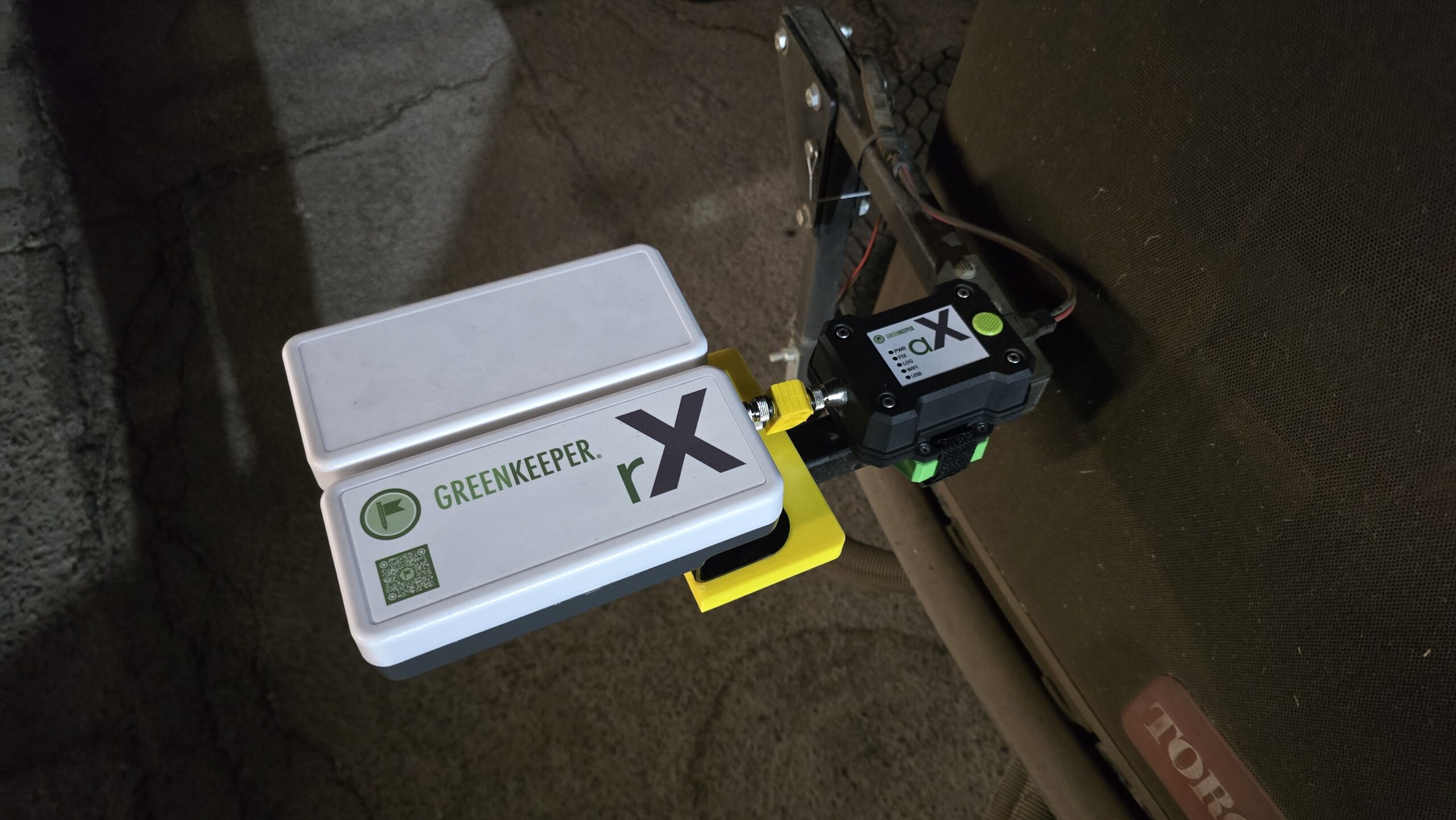
From Research to Real-World Application
Field research using this type of system demonstrated that canopy-based leaf density and nitrogen status values were strongly correlated with measured growth rate and could be used to identify the ideal growth range needed to maintain visual quality. These results provided the scientific foundation for a reflectance-based nitrogen decision-support model that can reduce variability across fairways and improve nitrogen use efficiency.
In field trials at Ager Golf Course, variable-rate nitrogen (VRN) applications guided by canopy reflectance monitoring reduced total nitrogen use by up to 90 percent compared to a uniform application schedule—while maintaining turf quality and playability (Carlson, 2022). This research confirmed that routine canopy monitoring can help turf managers apply less fertilizer, extend the interval between applications, and achieve more consistent playing conditions across fairways.
Other turfgrass research supports these findings. Sullivan et al. (2017) demonstrated that active canopy sensors can quantify management effects such as mowing height and PGR treatments on bermudagrass quality, while an Rachmilevitch et al. (2019) study found that multispectral reflectance from a tall fescue canopy correlated with turf biomass, nitrogen concentration, and soil moisture. These studies reinforce the scientific foundation for active canopy sensing and our continued work developing Turf Vision technology to measure and detect water stress.
Our ongoing research is expanding these applications to identify early signals of drought stress by integrating canopy reflectance data with soil moisture and weather information.
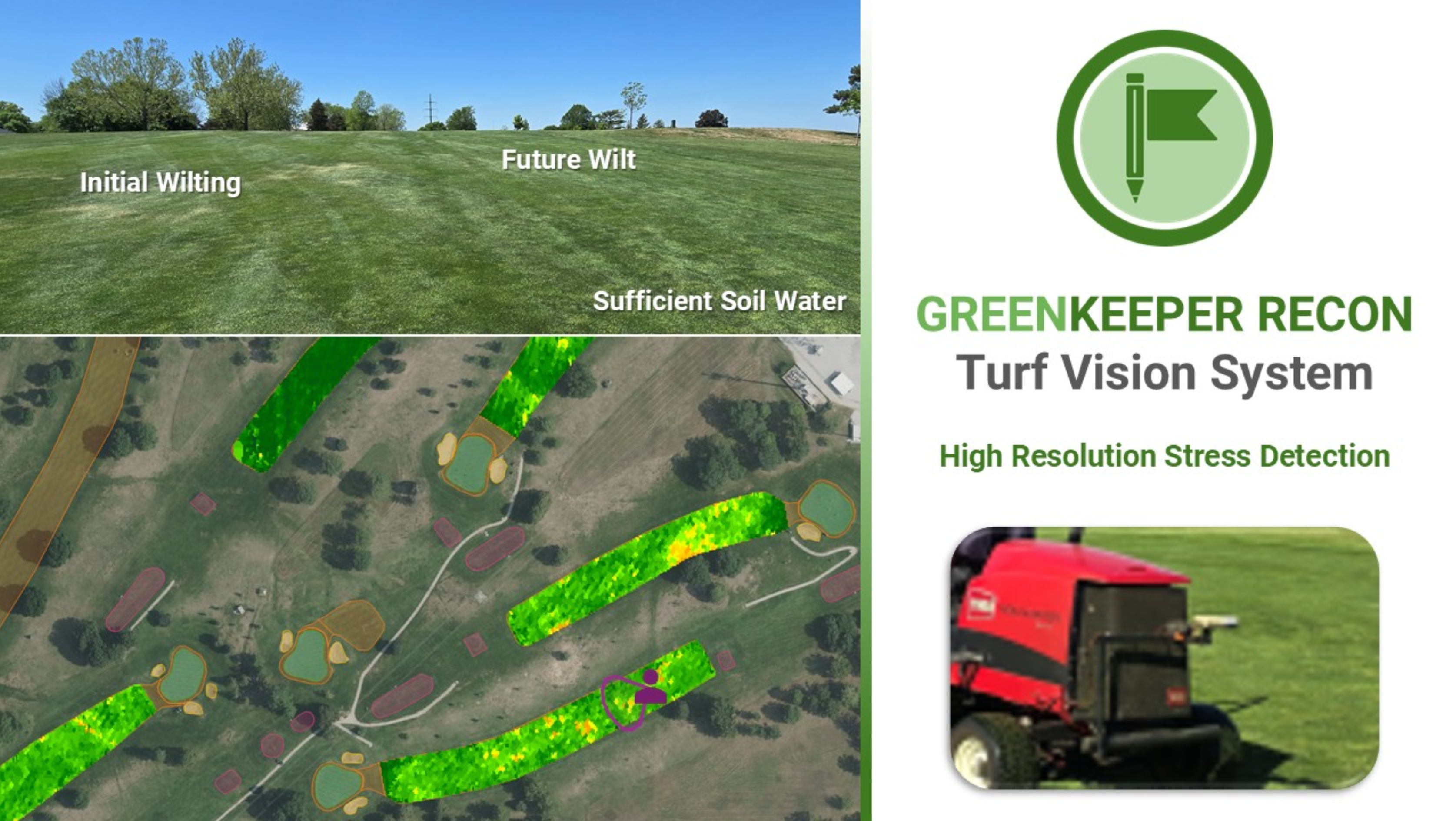
Why We Chose This Technology
After evaluating multiple sensing methods during our research phase, we found that active canopy sensing offered the best combination of reliability, resolution, and practicality for golf-course use. The mower-mounted design collects data as part of routine maintenance, requiring no special flights, lighting, or image-stitching. It provides consistent readings that can be compared day-to-day, which is critical for detecting subtle changes in growth or stress.
This system became the foundation for the GreenKeeper RECON platform because it produces high-quality data that integrate directly with agronomic models and decision-support tools. The same scientific principles used in our field trials now allow turf managers to monitor growth, evaluate PGR performance, anticipate water stress, and visualize spatial variability across entire courses with a level of precision that was once only available in research plots.

Looking Ahead
The GreenKeeper RECON Turf Vision Sensor represents more than a piece of hardware—it’s the culmination of years of research aimed at connecting what turf managers see on the surface to what’s happening inside the plant. Continued development is focused on integrating this canopy data with soil-moisture, weather, and growth models to give a more complete picture of turf health and resource use.
In our next article, we’ll discuss the importance of ground truthing—verifying that remote-sensing data reflect real field conditions—and how it transforms raw data into reliable, actionable information for turf management.
References
-
Carlson, M. 2022. Use of Active Canopy Reflectance to Characterize Turfgrass Growth, Nitrogen Status, and Spatial Management Zones. Ph.D. Dissertation. University of Nebraska–Lincoln.
-
Sullivan, D. G., et al.. 2017. Spectral Reflectance of Hybrid Bermudagrass as Affected by Mowing Height and Trinexapac-ethyl. HortTech, 27:365–371.
-
Rachmilevitch, S., et al. (2019. Using Hyperspectral and Multispectral Indices to Detect Water Stress for an Urban Turfgrass System. Agronomy, 9:439.

